We join Andy Crow for an evening’s pigeon shooting and get his golden rules of the roost.

The end of the game shooting season opens up the opportunity for some really excellent seasonal pigeon action. For some people without their own permissions, commercial opportunities can be had for very reasonable money. For the keepers, it combines pest control with a chance to pay back the beaters for their hard work over the season with a bit of shooting. Even for old hands like Andy Crow, it gives an hour or two of action at the end of a winter’s day on the farm.
“During the game season, the keepers don’t want disturbance in the woods – this is the sanctuary for their gamebirds to roost and shelter. They are also havens for roosting pigeons and numbers can build up quite dramatically.”
Not all roost woods are the same. Geography and prevailing weather conditions will inevitably impact on where the pigeons rest up. An exposed deciduous copse will not provide shelter from wind and rain, whereas dense conifers will. A warm, dry pigeon is going to be a lot happier than a cold, wet one! Mild, calm conditions might see the birds disperse again.
So reconnaissance, as with all aspects of pigeon shooting, is essential. Frequently, roost shoots are organised affairs, with multiple Guns being shepherded by the keeper to pockets and patches of woodland all over the particular estate. This can work well as the Guns will keep the birds moving and hopefully that will provide more sport.
But that is not to say that a lone shooter can’t enjoy an afternoon of success.
Diese Geschichte stammt aus der March 2017-Ausgabe von Sporting Shooter.
Starten Sie Ihre 7-tägige kostenlose Testversion von Magzter GOLD, um auf Tausende kuratierte Premium-Storys sowie über 8.000 Zeitschriften und Zeitungen zuzugreifen.
Bereits Abonnent ? Anmelden
Diese Geschichte stammt aus der March 2017-Ausgabe von Sporting Shooter.
Starten Sie Ihre 7-tägige kostenlose Testversion von Magzter GOLD, um auf Tausende kuratierte Premium-Storys sowie über 8.000 Zeitschriften und Zeitungen zuzugreifen.
Bereits Abonnent? Anmelden

RSPB gives mixed message on shooting
Having recently attended the RSPB’s virtual AGM, Conor O’Gorman discusses the outcome of the charity’s year-long review of game bird shooting
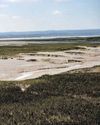
Causeway for concern
Alan Jarrett’s renewed interest in reading takes him down memory lane to an offshore island duck flight that very nearly ended in disaster

Through a purple patch
The Garrows Estate is taking a conservation-focused approach to restoring the wildlife populations and biodiversity on the Scottish heather moorland.
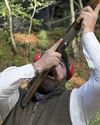
When the wheels fall off
Losing form on a day’s shooting can be infuriating, especially if you’ve been shooting like a god up to that point. Simon O’Leary looks at some common causes and how to remedy them
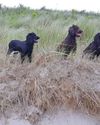
Beaches, books & bad behaviour!
The annual Kay family vacation to Northumberland offers a chance to give the cockers a blast on the beach – although they don’t always shower themselves in glory, as Ryan Kay recalls...

Using the Stop whistle
Now you’ve instilled the basics, it’s time to up the ante with some more tricky distance work. Howard Kirby explains how to take the core Stop whistle command to the next level
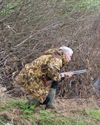
The humble teal
They may be tiny, but as far as Rupert Butler is concerned, the appeal of this little duck is huge. He recalls some of his most memorable nights in pursuit of these aerial acrobats

Fab all-rounder
Mike is impressed with the Fabarm Elos B2 Field Notte, which offers great value for money, is suited to fieldwork or clays and is future-proofed for use with steel in all choke constrictions

CALL OF THE WILD
Dom Holtam reconnects with one of the purest forms of shotgun shooting as he walks-up woodcock over pointing dogs in the Scottish Highlands
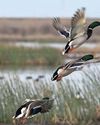
A yen for the Fens
Tony Jackson recounts a memorable duck flight over an area of Fenland in Norfolk with his friend and author, the late Alan Savory